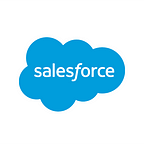Beauty Marketing in 2015: 5 Tips from a Makeup Genius
By Heike Young
Beauty marketing has changed a lot since the days of two to three mainstream lipstick brands and two available nail polish shades: pink or red.
The Marketing Cloudcast, the marketing podcast from Salesforce, talked to L’Oreal Head of Digital and Media ANZ Christophe Eymery to get more context on beauty marketing in 2015—and what other companies can learn from it.
Whether your company sells skin care or software, this episode of the Marketing Cloudcast shares clear takeaways from Christophe’s experience with mobile app marketing techniques, email marketing ideas, and personalization trends that can apply to any business.
Check out Christophe’s episode of the podcast below, then subscribe on iTunes to get it on your podcast-listening device of choice.
- Create a useful mobile app. One of L’Oreal’s biggest recent success stories: the Makeup Genius mobile app, which lets consumers virtually try on different beauty products. Millions have downloaded the app worldwide. This app works because it’s truly content marketing in app form. Makeup Genius offers a valuable service, not ads, as it draws in customers with a fun experience. Great lesson for brands looking to branch into a mobile app as part of their mobile marketing strategy.
- Remain a student of current trends. To keep their marketing relevant, Christophe explains that he and his team constantly watch the latest beauty marketing trends, like YouTube makeup haul reviewers and Instagram makeup artists—many of whom have as much reach and influence as Hollywood celebs. To reach customers in new ways, L’Oreal keeps an eye on the state of marketing to see which channels their demographic customers prefer. In the rapidly evolving world of marketing, every marketer should adopt this forever-a-student practice.
- For happier and more loyal customers, personalize. When it comes down to it, beauty marketing is all about personalization: showing consumers the precise skin care, makeup, hair, or nail product that speaks to their unique look and preference. Non-beauty marketing is no different. Whether you’re selling a B2B software product or you operate a small design firm, personalized marketing is increasingly key. Look for ways to tailor each email, social message, and customer service interaction to every individual.
- Tie mobile data to email. Christophe shares on the podcast that L’Oreal’s Makeup Genius app saw even more success when the company tied mobile and email data together to reach highly engaged customers on multiple fronts. Where is your data siloed? Perhaps customers favorite items on your website or leave them in a cart, but don’t get an email about them later. Your goal should be to connect the data dots wherever possible. In fact, closing the data loop and sending relevant communications based on that data is a solid description of a modern marketer’s job.
- Look for the creativity and art in your work. Who is your biggest marketing inspiration? Often, professionals name visionaries like Walt Disney and Steve Jobs, who are known as much for their art as their revenue. (Hear Christophe explain why he names Steve Jobs as his biggest influence on the podcast.) The next time you’re faced with a marketing challenge, open your mind to finding a creative solution instead of just checking that item off your to-do list.
Get Christophe Eymery’s podcast episode now on iTunes! Tweet @youngheike with marketing questions or topics you’d like to see covered next on the Marketing Cloudcast.
Have you subscribed to the Marketing Cloudcast — the new marketing podcast from Salesforce? Subscribe now on iTunes for weekly interviews with marketing experts, and read the wrap-up of the previous episode.
